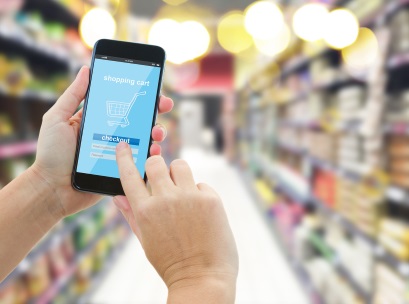 When it comes to brand marketing, “digital” is the hot topic … but when we talk about digital, we really mean “mobile”.
When it comes to brand marketing, “digital” is the hot topic … but when we talk about digital, we really mean “mobile”.
Zenith’s Media Consumption Forecasts 2016 predicts that mobile internet purchasing will climb 27.7 per cent this year, driving a 1.4 per cent increase in overall media consumption. A staggering 71 per cent of internet buying this year will by via mobile devices.
But with 93 per cent of all retail purchases in Australia being made in a store, it is not surprising that the holy grail for brand and retail marketers is to drive shoppers from mobile into store.
Internationally, such retailers as John Lewis, Tesco and Waitrose are already using smartphone strategies to drive O2O (online to offline). John Lewis online trade director Mark Felix describes mobile as “the glue between our shops and online”.
Phone smarts
But the challenge for FMCG brands is how to truly leverage the broadcast nature of mobile and deliver retailer-agnostic activation, when retailers prefer tailored promotions. For those who have tried, the results are compelling.
Absolut Botanik is an Australian brand that has seen the value of a targeted smartphone approach. Its in-store launch campaign had a 700 per cent uplift in engagement once shoppers activated digital media on their smartphones to redeem a special offer at liquor retailers across the country.
In another Australian example, Japanese retailer Uniqlo featured a rapidly changing number code on digital billboards. Customers could photograph the code with their mobile phone and use it to secure a product voucher to be redeemed in store that day.
Need for speed
While consumers can quickly adopt well-designed new technology, for brands the biggest stumbling block is often their slowness to evolve their thinking.
Smartphones can provide FMCG brands with the chance to play a major part in the consumer/shopper journey, from discovery to purchase to consumption, and everything in between.
FMCG brands can also structure their smartphone-based shopper-journey touchpoints to be independent of any particular retailer, dramatically expanding the audience reach and potential of any campaign.
Starting point
As with every campaign, the starting point should be the shopper. More than ever, time-poor, over-stimulated shoppers value convenience.
Brand messages on smartphones must be targeted and relevant, as consumers are quick to put anything spam-like in the trash. Importantly, any actions shoppers need to take must be easy, and preferably have an immediate payback. Ultimately, letting the customer shop where, when and how they choose will deliver the best outcome.
Traditional above-the-line media and retailer relationship management will always have a key place in FMCG shopper marketing, though roles may change as smartphone-based solutions develop and continue to prove value.
Now is the time for brands to be on the front foot by ensuring that while shoppers have their smartphone in hand, they have the right brand in mind.
Janet Bailey is the MD of Shopitize Australia, a mobile platform that connects shoppers to brands and retailers.















